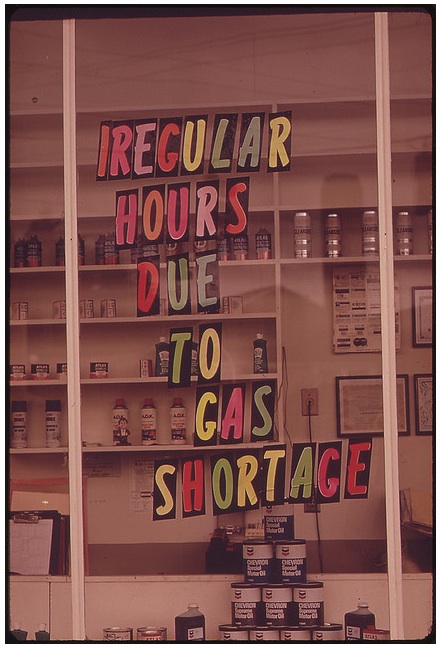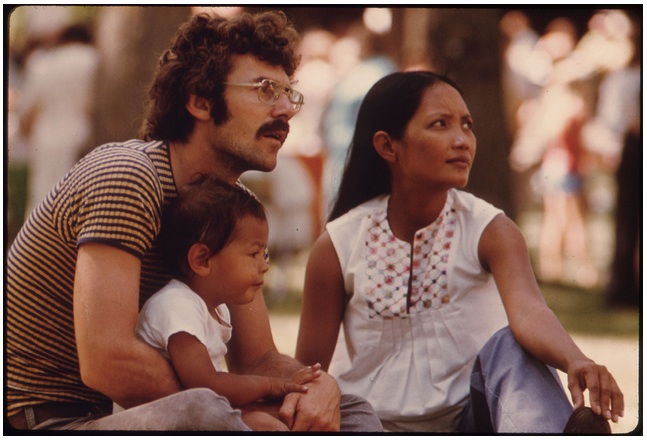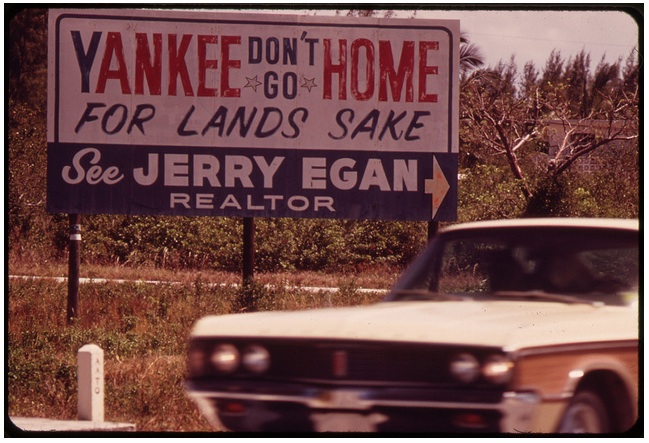Seeing the 1970s
The National Archives has recently been putting up an amazing collection of photographs from the 1970s, originally produced for a project called DOCUMERICA. The newly created Environmental Protection Agency commissioned freelance photographers to capture scenes of environmental degradation, as well as scenes of everyday life from 1971 to 1977. Â The project reminds me a lot of the New Deal-era photography projects, and it appears that photographers like John Vachon worked in both the 1930s/1940s and the 1970s.
The DOCUMERICA collections vary in theme and place, but taken as a whole they really capture many of the changes happening in American society at the time, as well as many of the intractable problems–poverty, in particular–that persisted. Â To refresh your memory of the era, here’s a helpful bit from Who Built America, Volume 2:
“Nobody,” wrote Time magazine, “is apt to look back on the 1970s as the good old days.” After a quarter-century of rapid growth, wages, productivity, and output dropped sharply in all of the great industrial nations. Recessions became more severe and more frequent, while unemployment rose to double the average level of the immediate postwar years. Many Americans connected this economic turmoil to liberal foreign and civil rights policies. Throughout the 1970s, the radical right gained more notoriety and support for attacking government activism and traditional liberalism. (p. 683)
We are still living in the shadow of many of the problems from the 1970s and the “solutions” offered in the following decades. It’s perfect timing, really, for the National Archives to publish these photos in a widely accessible venue like Flickr. Â The DOCUMERICA series is a rich archive, full of many thought-provoking and teachable images. Â Here are a few:
This photograph of a family celebrating the Fourth of July in Minnesota shows a multi-racial family in the previously racially homogenous upper midwest, as the original caption notes: “The County Was Settled in the Mid-1800’s by Germans, Norwegians and Swedes Who Are Clustered in Various Communities.”  The photographer’s original caption also describes the changes going on in agriculture, though: “Brown County Is Predominately a Farming Area Where the Farms Are Being Consolidated. in the Past Each Family Owned Land. Now the Farms Are Growing Larger and Are Operated by Two Or Three Generations of the Same Family.”  Such changes have had big impact on the economy and environment both locally and nationally; our growing waistlines also are related to the birth of “Big Ag” the photographer outlined.
Many of the photographs capture the malaise of the gas shortage, while at the same time showing the pollution caused by the United States’s reliance on cars.

A few sets of photographs capture the hyper-development of southern Florida during the period, as thousands of retirees fled south, shifting not only the physical landscape, but also the political and economic landscape of the ascendent “Sunbelt.”
(And don’t miss some scintillating pictures of retirees in their calisthenics classes!)
One set in particular captures inner-city poverty in a number of cities, including New York, El Paso (Texas), Patterson (New Jersey) and Chicago. Â As the photographer Danny Lyon observes, “The Inner City Today Is an Absolute Contradiction to the Main Stream America of Gas Stations, Expressways, Shopping Centers and Tract Homes. It Is Populated by Blacks, Latins and the White Poor. Most of All, the Inner City Environment Is Human Beings, as Beautiful and Threatened as the 19th Century Buildings [around them].”
It’s interesting to compare Lyon’s photograph of a young Hispanic woman in Patterson, New Jersey to the iconic Migrant Mother series from the Great Depression and to consider why one became so famous and one so obscure. Â What kind of lesson can you imagine around these two images, and what kind of conclusions might students draw about race, poverty, the economy and changing political values in the intervening years?
Last 5 posts by Leah Nahmias
- Teaching "What This Cruel War Was Over" - March 28th, 2011
- State of Siege and Public Memory at Ole Miss - March 25th, 2011






